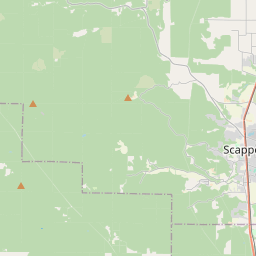Lewis and Clark on the Columbia
Historical marker location:
51891 SW Old Portland Road, Scappoose, Oregon
( Marker is at the intersection of Columbia River Highway (U.S. 30) and SW Old Portland Road, on the left when traveling north on Columbia River Highway.)







© OpenStreetMap contributors
A brief timeline of the Lewis and Clark Expedition
- 1803: President Thomas Jefferson commissions Meriwether Lewis, his personal secretary, to lead an expedition to explore the western territories of the United States and find a practical route to the Pacific Ocean.
- 1804: Lewis meets up with William Clark, a former army officer and experienced explorer, in Kentucky. They assemble a team of over 30 men and set out on the journey up the Missouri River.
- 1805: The expedition reaches the Rocky Mountains and crosses the Continental Divide. They build Fort Clatsop on the Pacific coast and spend the winter there, before returning east in the spring of 1806.
- 1806: Lewis and Clark split up to explore different routes on their way back to St. Louis. They reunite in September and return to civilization, where they are celebrated as national heroes.
- 1807: The Lewis and Clark Expedition publishes an official account of their journey, called the "History of the Expedition Under the Command of Captains Lewis and Clark," which becomes a bestseller and helps to promote westward expansion.
Loading...
Searching for other points of interest within 3 miles of this location.Oregon was the only state in the United States to have a government run by the Ku Klux Klan. In the 1920s, the KKK gained significant political power in Oregon, electing a governor, a mayor, and several legislators. This era of Oregon's history is known as the "Klanbake."
About Columbia County
Columbia County Timeline
Columbia County, Oregon has a rich history that dates back thousands of years. Native American tribes, including the Chinook and Clatskanie tribes, inhabited the region for centuries before European settlement. In the early 19th century, explorers and fur traders, such as Lewis and Clark, ventured into the area, marking the beginning of the region's interaction with European settlers.
In the mid-19th century, Columbia County experienced a significant influx of settlers, drawn by the prospects of fertile land and natural resources. The establishment of the Oregon Trail and the completion of the Columbia River Highway in the late 1800s further encouraged the growth of Columbia County. The county went through several name changes before settling on its current name in 1854, reflecting its position along the Columbia River.
The late 19th century saw the rise of industries such as logging, fishing, and coal mining. The timber industry, in particular, played a crucial role in shaping the county's economy and identity. The Oregon-American Lumber Company, headquartered in Rainier, became one of the largest lumber producers in the world at the time.
With the decline of the timber industry in the latter half of the 20th century, Columbia County has sought to diversify its economy. Today, the county boasts a mix of industries, including manufacturing, agriculture, and tourism. The natural beauty of the region, with its lush forests, rivers, and scenic views, continues to attract visitors and residents alike. Columbia County's rich history is celebrated through various museums, historical sites, and events that highlight the region's unique heritage.
In the mid-19th century, Columbia County experienced a significant influx of settlers, drawn by the prospects of fertile land and natural resources. The establishment of the Oregon Trail and the completion of the Columbia River Highway in the late 1800s further encouraged the growth of Columbia County. The county went through several name changes before settling on its current name in 1854, reflecting its position along the Columbia River.
The late 19th century saw the rise of industries such as logging, fishing, and coal mining. The timber industry, in particular, played a crucial role in shaping the county's economy and identity. The Oregon-American Lumber Company, headquartered in Rainier, became one of the largest lumber producers in the world at the time.
With the decline of the timber industry in the latter half of the 20th century, Columbia County has sought to diversify its economy. Today, the county boasts a mix of industries, including manufacturing, agriculture, and tourism. The natural beauty of the region, with its lush forests, rivers, and scenic views, continues to attract visitors and residents alike. Columbia County's rich history is celebrated through various museums, historical sites, and events that highlight the region's unique heritage.
Columbia County Timeline
This timeline provides a glimpse into the major events and milestones that have shaped the history of Columbia County, Oregon.
- 1805 - Columbia County is explored by the Lewis and Clark expedition.
- 1825 - The first permanent settlement is established in the present-day Columbia County.
- 1854 - Columbia County is officially established by the Oregon Territorial Legislature.
- 1880 - The population of Columbia County reaches over 5,000 people.
- 1920 - The Columbia River Highway is completed, improving transportation in the county.
- 1965 - The St Helens School District is formed.
- 1981 - Columbia County Historical Society is established to preserve the county's history.
- 1996 - The county seat is moved from Hillsboro to St Helens.
- 2007 - The Scappoose Bay Marine Park is opened, providing recreational opportunities for residents.